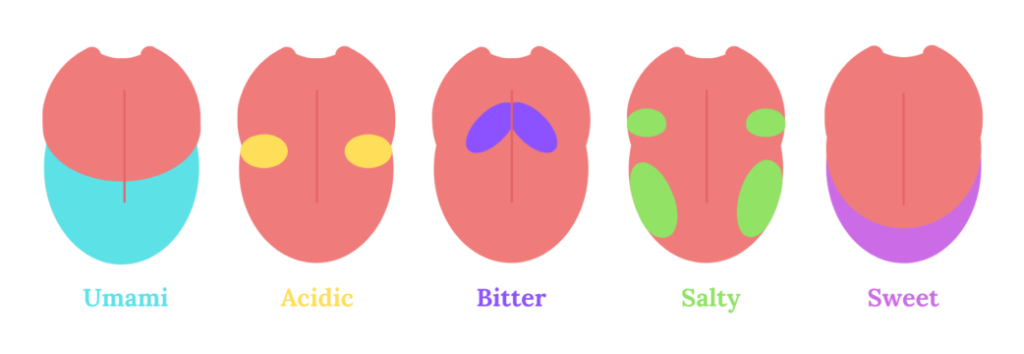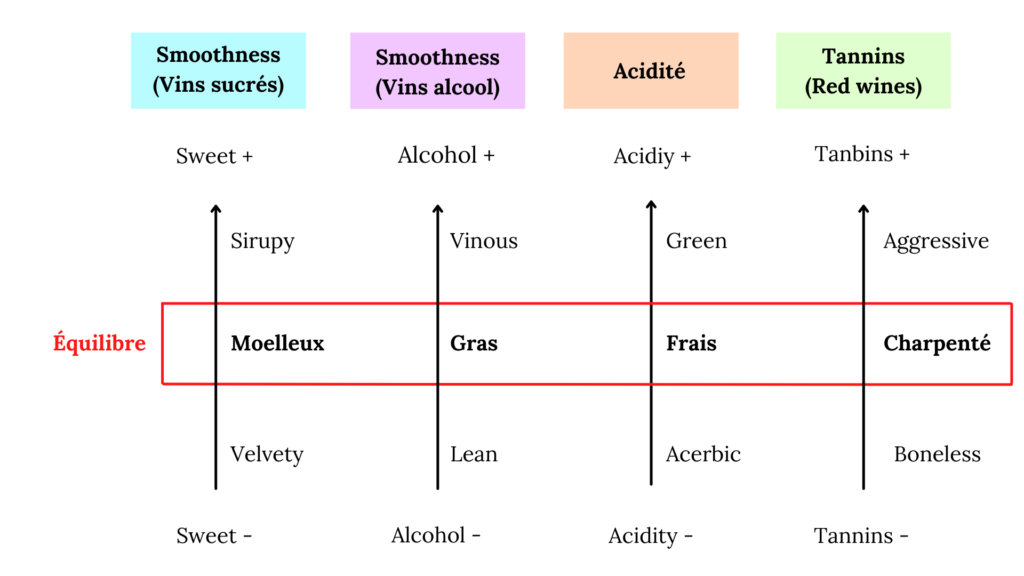In a previous article, we showed you how to taste a wine. You have learned what are the three phases of wine tasting, today we will focus on the analysis of the flavors that a wine releases.
The tongue: an essential organ for tasting wine
The tongue is the most important organ in our mouth during wine tasting. More precisely, it is the papillae located on the tongue that detect the different tastes.
The front part of the tongue (about 3 centimeters from the tip) is the most sensitive part. The receptors on the tongue capture the five primary flavors: acid, bitter, salty, sweet and umami.
Acid: It is perceptible on the edges of the tongue.
Bitter: The middle of the tongue feels the bitterness.
Salty: The bottom of the tongue senses saltiness.
Sweet: The tip of the tongue senses sugar.
Umami: If the first four flavors are familiar to us, the fifth is less so. The umami has a long-lasting and sweet aftertaste, it provokes salivation and a furry sensation on the tongue.
In addition to the basic flavors, it is possible to identify “tactile” flavors in the mouth. Indeed, the two back centimeters of the tongue allow to feel the astringency. Characteristic of tannic red wines, astringency is manifested by a drying of the gums. It can be more or less marked according to the quantity and the flexibility of the tannins.
The flavors and their balance in the mouth
Too sweet, not enough tannin… how to qualify the balance of a wine? You will find below the terms to put a word on the sensations that you find in mouth.
Smoothness : Also called unctuousness, the smoothness generates a sensation of fat and roundness in the mouth. For sweet white wines, the unctuousness is due to the sugar. On the other hand, for dry white wines, it is due to the alcohol.
Acidity: Acidity has the particularity of making the mouth react with a very fluid salivation. When it is well balanced, it brings a sensation of freshness in the mouth.
Tannins: Astringency is a determining parameter for determining the balance and ageing potential of red wines. Tannins that rise to the gums and dry out the mouth are a sign of under-ripe grapes and/or over-extraction.
In conclusion, a wine that is balanced testifies to the expertise of a winegrower, to the success of its wine making and its maturation!




